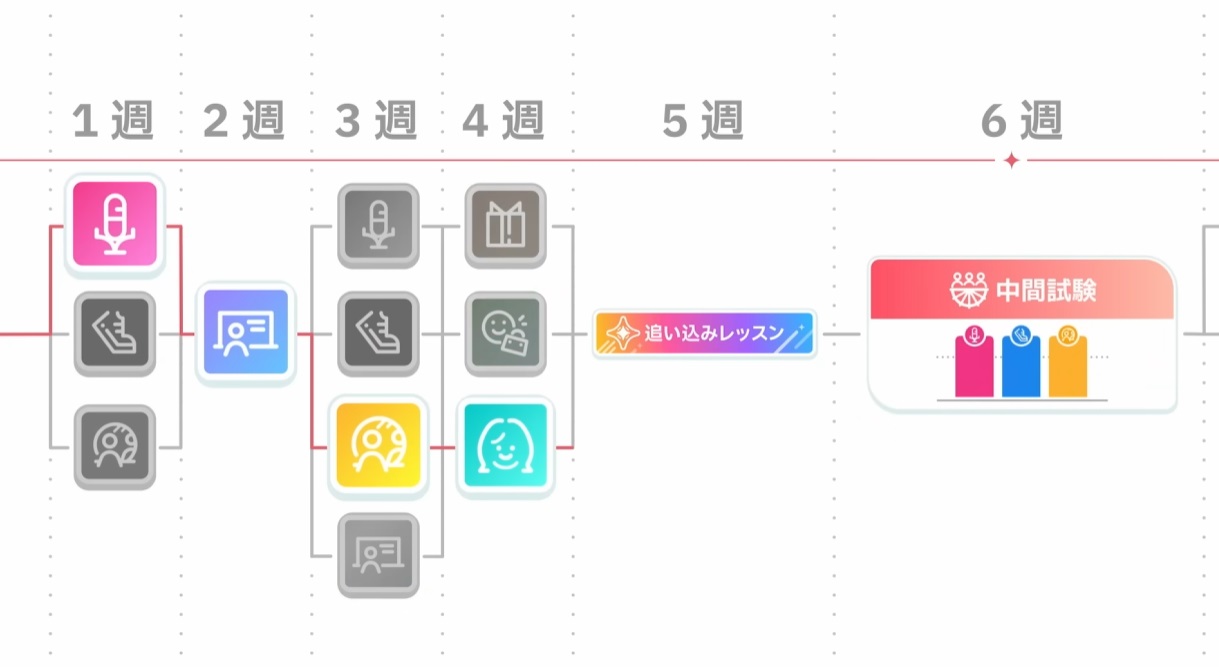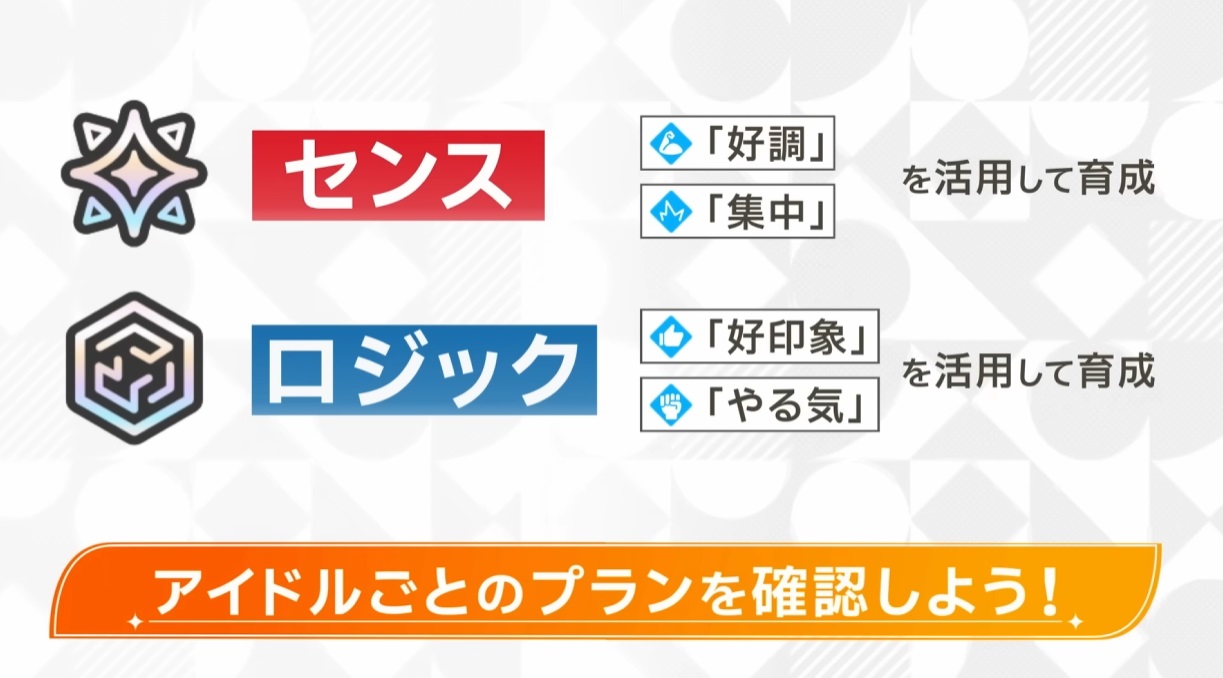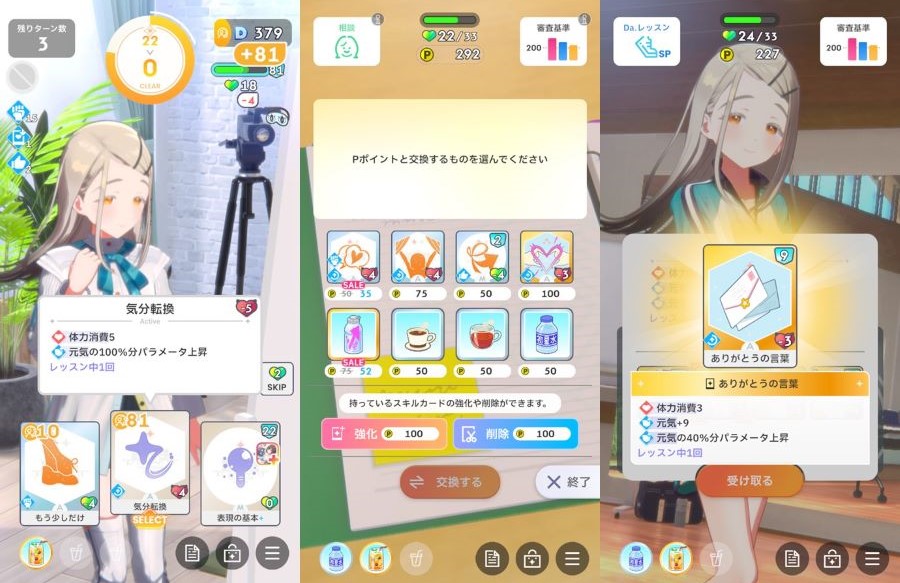Bandai Namco released Gakuen Idolmaster on May 16 in Japan. Available on iOS and Android, the free-to-play mobile game surprisingly combines the Idolmaster universe with Slay the Spire-style deck-building.
Developed by Cyberagent subsidiary QualiArts, Gakuen Idolmaster is the latest title in the Idolmaster series of games in which the player must develop young hopefuls into successful all-singing, all-dancing stars. The game is set at the Hatsuboshi Gakuen, a special school for girls who want to become idols. As their producer, you must cultivate the strengths of the candidates at the school.
Soon after it was released, Gakuen Master shot up to number 1 on Japan’s download ranking charts. The game incorporates elements of the Idolmaster series and also gives users a rich playing experience thanks to QualiArts technological know-how. Surprisingly, Gakuen Master is receiving praise in some circles for its deck-building gameplay.
For example, if you search for “deck building” (デッキ構築) on the Japanese language side of X, you will find many comments evaluating Gakuen Master in this context. Although the game’s official genre is “idol raising simulation,” many players are analyzing it in terms of how good it is as a deck builder (Myself included). Some people are even downloading the game purely because it is said to feel like Slay the Spire in terms of gameplay.
So, which elements of the Gakuen Idolmaster resemble Slay the Spire? First and foremost, it features card-based battles and each playable character has a fixed type (This is similar to how the Slay the Spire characters all start out with particular attributes that affect your strategy for playing them, for example The Defect starts out with the ability to use orbs). Also, detailed management of the synergy between elements is important in both games (for example, in Slay the Spire, it is crucial to continuously manage your deck and, where possible, add cards that work well with each other and your relic buffs).

In Gakuen Idolmaster, the player’s idols repeatedly learn lessons and then compete in tournaments, which have a similar feel to Slay the Spire’s regular battles and boss battles respectively. Gakuen Idolmaster also has random SP lessons, which are analogous to Slay the Spire’s Elite battles. In short, Gakuen Idolmaster’s lessons and tournaments are battle-like, and the gameplay feels similar to a deckbuilder.
But having different types of battle is common in deck builders other than Slay the Spire. In my opinion, the following elements make Gakuen Idolmaster feel most like Slay the Spire: “each playable character has a type,” “each type has an interesting build” and “the importance of stacking up a lot of buffs.”
There are two character classes in Gakuen Idolmaster- the “sense” type and the “logic” type. Each character within these classes has further individual attributes that affect how you play. For example, for one character, steadily building up your concentration will make your score gradually increase, whereas for another character, accumulating shields will cause her score to shoot up at the end. Of course, each character has their own strengths and weaknesses but the balancing is such that, with the right strategy, it’s possible to build up a score with any of them. This also makes it feel Slay the Spire-like.

In Gakuen Idolmaster, it is possible to optimize your deck by strengthening cards and deleting surplus cards (like in Slay the Spire). There are also P items that work like relics, giving the game all the promising elements of a typical deckbuilder- hence why it is being evaluated as one by many players.
Incidentally, The Idolmaster Shiny Colors: Song for Prism is another entry in the series with deck building elements. However, Gakuen Idolmaster is more streamlined with fewer parameters and less variety overall, shifting player concentration onto detailed management of these elements and synergies. This tighter focus might also contribute to the game’s Slay the Spire-ness.
Of course, Gakuen Idolmaster is not Slay the Spire. At the time of writing, it has a much narrower range of possible builds compared to Slay the Spire. While there are similarities between the systems used in the two games, in practice they are very different. For example, most of the helpful support cards in Gakuen Idolmaster are obtained from gacha pulls. It is not a game that allows you to play in a variety of precisely balanced ways immediately upon download.
Despite this, the character builds in Gakuen Idolmaster are interesting and well thought out. Assembling your deck is fun and it’s satisfying when you manage to pull off combos. If future updates expand the scope of the game, the deck building aspect will get even more interesting. We look forward to seeing how this game evolves.
Gakuen Idolmaster is free-to-play on iOS and Android (with in-game purchases).
Translated by. Verity Townsend from the original Japanese article (original article’s publication date: 2024-05-20 21:39 JST)





